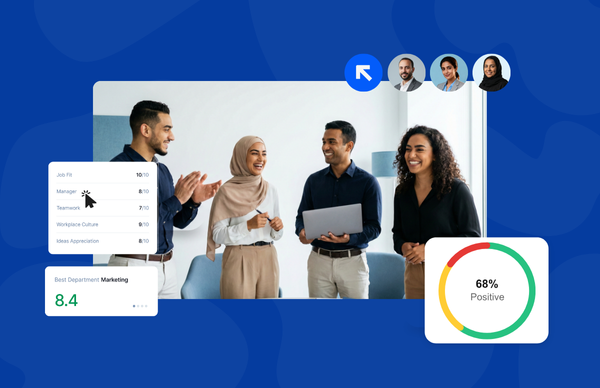How HR Leaders Can Influence CEOs to Improve Employee Engagement
June 10, 2024
|
5 min read
%20Employee%20Engagement%20How%20HR%20Leaders%20Can%20Influence%20CEOs%20to%20Improve%20Employee%20Engagement%20%E2%80%93%20.png)
When employees are unmotivated and disengaged, leaders often look for root causes in the tools, processes, direct managers, and even workplace culture. But more often than not, disengagement is connected to the leadership of the organization. Arguably, the CEO can inspire and boost employee engagement more than anyone else in the organization by adopting effective leadership practices.
As an HR leader, you are in a unique position to influence the CEO and other leaders in your organization to embrace practices that will increase employee engagement. In this article, we will highlight the aspects of leadership that have a direct impact on employee engagement, and some advice to help you positively influence your CEO to adopt these practices.
“Take care of your employees, and they will take care of your business. As simple as that.” -Richard Branson.
Ways Effective Leadership Drives Employee Engagement
- Clarity
Business and strategy clarity are important drivers of the employees’ sense of job engagement. The CEO should invest time and effort to make sure that employees understand the direction of the business and what it takes for them to succeed in the context of this strategy. Communicate clearly and regularly so there isn’t any confusion over priorities, direction, or expectations.
- Consistency
CEOs that are perceived to change their strategy, direction, or priorities increase the levels of confusion and frustration among their employees. Employees expect their CEOs to communicate strategies and directions that remain consistent and avoid abrupt changes.
- Empathy
Effective leaders put themselves in the shoes of those they lead, understanding what they are feeling and why. Furthermore, they take the interests and aspirations of the employees of the organization into account in all decisions they make.
- Fairness
CEOs always act with fairness; both in terms of the policies of the organizations that impact the wellbeing and the opportunities available to the employees, as well as in terms of treating everyone equally and ensuring decisions are made on merit
- Recognition
The best CEOs are role models for the entire organization in recognizing and celebrating the achievements of their best performers. Recognition (as well as feedback) is one of the key drivers of employee engagement.
How HR Leaders can Influence their CEOs
Here are some ways you can follow to work with your CEO and influence them positively to implement practices that drive higher employee engagement.
1. Educate the CEO about the benefits of employee engagement.
Show the CEO how employee engagement can lead to improved business outcomes, such as increased productivity, lower turnover, and higher customer satisfaction. Help them understand that engaged employees are more likely to be committed to their work and go the extra mile to contribute to the success of the organization.
2. Share examples of other organizations that have benefited from employee engagement.
There are many companies out there that have reaped the rewards of investing in employee engagement. Share some of these examples with the CEO to show them what’s possible.
3. Help the CEO develop an employee engagement strategy.
Once the CEO is on board with the idea of increasing employee engagement, work with them to develop a strategy. This should include goals, action items, and timelines. Be sure to involve other leaders in the organization in the planning process.
4. Be a champion for employee engagement.
The CEO may be more likely to commit to engagement if he or she sees that you are passionate about it. Be an advocate for change within the organization, and help to create a culture of engagement.
By taking these steps, you can help the CEO in your organization see the value of employee engagement and take action to improve it. This will benefit everyone in the company, from the employees themselves to the bottom line.

%20Employee%20Engagement%20Does%20Your%20Leadership%20Style%20Fit%20%20%E2%80%93%20.svg)




